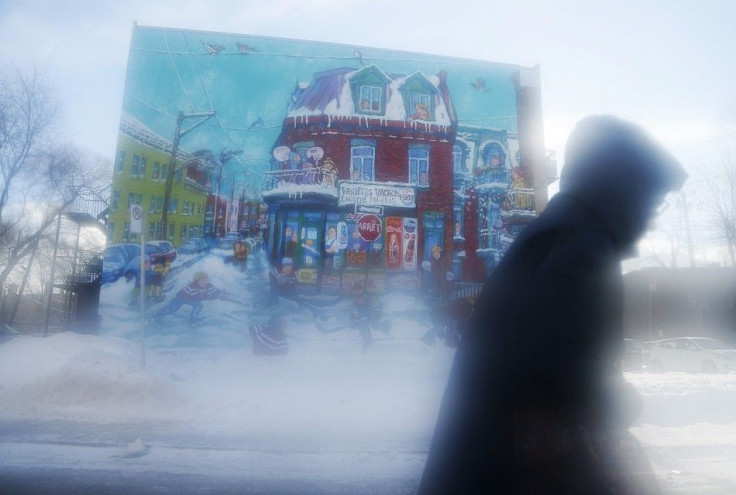Canada’s Bitter Cold: Gives Birth to ‘Frost Quakes,’ Creates Travel Chaos

Canada's prevailing bitter cold temperature conditions has created a massive travel chaos all over the country, with air and road travel pretty much suspended on Tuesday. The freezing weather has likewise given birth to "frost quakes," giving off panic and tension to already anxious residents.
The Pearson International Airport in Toronto issued a ground stop order on Tuesday. Also known as ground freeze, airport authorities technically halted operations to ensure the safety of both airport employees and equipment.
"It was the extreme weather conditions that impacted safe operations and employee safety," Shereen Daghstani, Greater Toronto Airports Authority spokeswoman, was quoted by CBC News. "When it comes to refuelling or removing the bags, those need to be done by employees."
The same scenario was replicated at Stanfield International Airport at Halifax, Pierre Elliott Trudeau International Airport at Montreal and James A. Richardson International Airport at Winnipeg.
Read: Chaos in Canada Due to Extreme Cold (Photos)
The halt order effectively minimised the time employees had to spend outdoors, thus resulting to flight or airport operations delay, if not all together travel cancellations.
With the ground stop order, gates were ordered closed, resulting to airplane backlog. Even luggage bags weren't spared.
"[They] were getting very frustrated and irate, because there was a ground freeze and they weren't getting their baggage," Const Lilly Fitzpatrick said.
Ms Fitzpatrick said five extra officers were called to the airport to manage the frustrated travelers.
"They helped calm people down, they answered questions, they tried to get the information that the people needed as to when they were going to be getting their baggage," she said.
Read: Travel Alert: Canada Beset With Growing "Deadly" H1N1 Flu Cases
Those people ensconced, meantime, in their homes, already anxious over the freezing weather, further tensed when a series of earthquakes jolted right in the middle of the bitter cold temperature. Residents panicked and didn't know whether to run from their homes and right smack into the cold weather or to just stay inside and pray the jolts subside and stop all together.
The frost quakes phenomenon began in Toronto on Wednesday evening, creating a ripple effect to the surrounding regions. They happened between midnight and dawn, the coldest part of the night. They lasted Thursday evening and into Friday morning.
Frost quakes, scientists said, occurred as temperatures plummeted to -20°C (-4 Fahrenheit). The frost quakes were so powerful it rattled not only houses but also the nerves and wits of residents.
Frost quakes happen when a warm spell allows rain or melting snow to seep into cracks and crannies in the ground. When a cold front suddenly hits, the water quickly freezes, expands and outgrows its small underground space.
It then cracks the frozen soil or bedrock around it to make room. The resulting cracking boom can be frighteningly loud and can even make the ground shake.
Suffice to say, frost quakes are cold weather conditions related. It doesn't have magma in it, so residents are advised to just sleep through it.




















